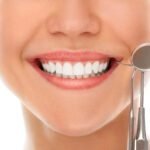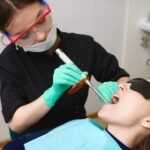Table of Contents
The Importance of Early Oral Care for Children
To ensure the optimal oral health of children, early care and attention are crucial. Establishing good oral hygiene habits from an early age can set the foundation for a lifetime of healthy teeth and gums. It is recommended that parents begin cleaning their child’s mouth even before the eruption of the first tooth.
One of the primary reasons for early oral care is the prevention of dental decay. According to the American Academy of Pediatrics, tooth decay is the most common chronic disease in children, and it can have long-lasting effects on their overall health. Starting early helps to eliminate harmful bacteria and establish a clean and healthy environment in the mouth. Additionally, early oral care can aid in the development of proper speech patterns, ensure the correct alignment of the jaws and teeth, and promote normal chewing and digestion.
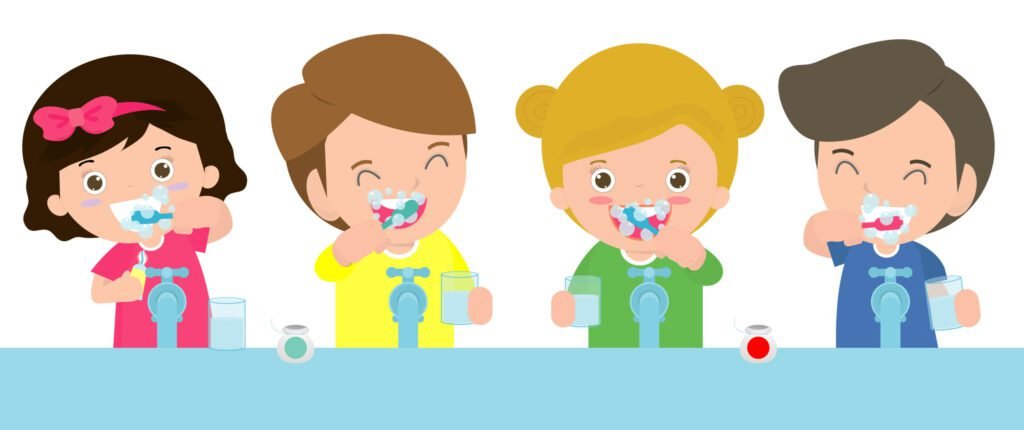
Understanding the Development of Baby Teeth
Baby teeth, also known as primary teeth, play a crucial role in a child’s oral development. These temporary teeth begin to erupt around six months of age and continue to emerge until around the age of three. Understanding the development of baby teeth is essential for parents and caregivers to ensure the proper care and maintenance of their child’s oral health.
The eruption of baby teeth follows a specific sequence and timeline. Generally, the two lower central incisors are the first to emerge, followed by the upper central incisors. As the child grows, the lateral incisors, first molars, and canines begin to appear. The last teeth to come in are the second molars, completing the set of 20 primary teeth. It’s important to note that the eruption schedule may vary for each child.
During this developmental process, baby teeth serve several important functions. They help children with chewing and speech development, as well as maintaining space for permanent teeth to grow in properly. Healthy primary teeth also contribute to a child’s overall well-being by ensuring proper nutrition and fostering self-confidence. Understanding the stages of baby teeth development allows parents to monitor their child’s oral health and seek early intervention if necessary.
The Role of Nutrition in Children’s Oral Health
Proper nutrition plays a crucial role in children’s oral health. The foods and drinks that children consume can have both immediate and long-term impacts on their teeth and gums. A well-balanced diet that includes a variety of nutrients is essential for the development and maintenance of healthy teeth.
One important nutrient for oral health is calcium. Calcium helps to build strong teeth and bones, and it is especially important during childhood when teeth and bones are still developing. Good sources of calcium include dairy products, leafy green vegetables, almonds, and fortified foods such as orange juice and cereal. Encouraging children to consume these calcium-rich foods can help to support their dental health.
In addition to calcium, vitamins such as vitamin D and vitamin C are also important for oral health. Vitamin D helps the body to absorb calcium, while vitamin C helps to promote healthy gums. Good sources of vitamin D include fatty fish, eggs, and fortified milk, while fruits and vegetables, particularly citrus fruits and strawberries, are excellent sources of vitamin C. By ensuring that children receive adequate amounts of these vitamins through their diet, parents can help to protect their children’s teeth and gums.
By focusing on providing children with a well-balanced diet that includes the necessary nutrients for oral health, parents can set the foundation for a lifetime of good dental habits. Along with regular brushing and flossing, proper nutrition plays a vital role in promoting healthy teeth and gums in children.
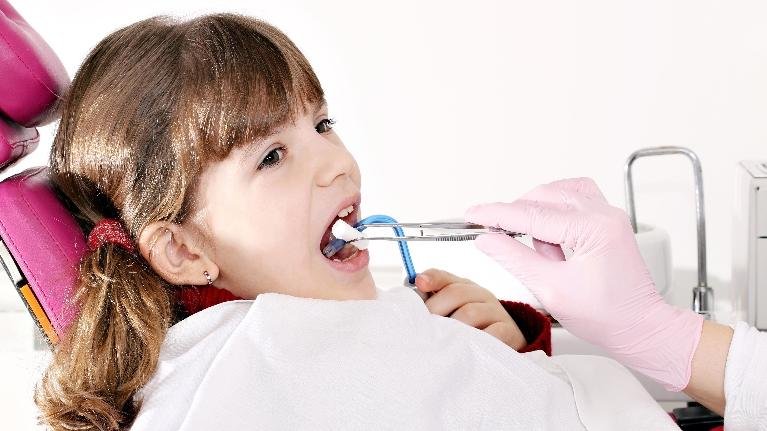
Effective Techniques for Brushing Children’s Teeth
Brushing your child’s teeth is an essential part of their oral hygiene routine. However, getting them to cooperate can sometimes be a challenge. To ensure effective brushing, it’s important to use the right techniques.
Firstly, make sure you are using a soft-bristled toothbrush suitable for children. Apply a small amount of fluoride toothpaste, about the size of a grain of rice for children under three and a pea-sized amount for children over three.
Start by brushing the front surfaces of their teeth in small circular motions, moving from the gums towards the biting surfaces. Pay special attention to the gum line, as this is where plaque tends to accumulate. Then, move on to the back surfaces, brushing in the same circular motion. Don’t forget to brush the chewing surfaces as well.
Although some children may resist having their teeth brushed, try to make it a positive and enjoyable experience. Use a gentle and encouraging tone. Sing a song, play their favorite music, or even use a tooth brushing app to make it more engaging. It can also help to let them choose their own toothbrush and toothpaste, as this gives them a sense of control and ownership over their oral care routine.
Remember, children need assistance with brushing their teeth until they are around 7-8 years old, as they may not have the manual dexterity to do it effectively on their own. Supervise their brushing and offer guidance whenever needed. Making brushing a fun and interactive activity will not only help maintain their oral hygiene but also instill lifelong healthy dental habits.
Choosing the Right Toothbrush and Toothpaste for Kids
When it comes to choosing the right toothbrush and toothpaste for kids, there are a few key factors to consider. First and foremost, selecting a toothbrush with soft bristles is important to avoid any potential damage to the delicate gums and enamel of your child’s teeth. Soft bristles are gentle enough to effectively clean their teeth without causing any discomfort or irritation.
In addition to bristle softness, the size of the toothbrush head is also essential. Opting for a toothbrush specifically designed for children ensures that the head is small enough to comfortably fit in their mouth and reach all areas of their teeth. This allows for thorough cleaning and removes any bacteria or food particles that could potentially lead to tooth decay or other oral health issues.
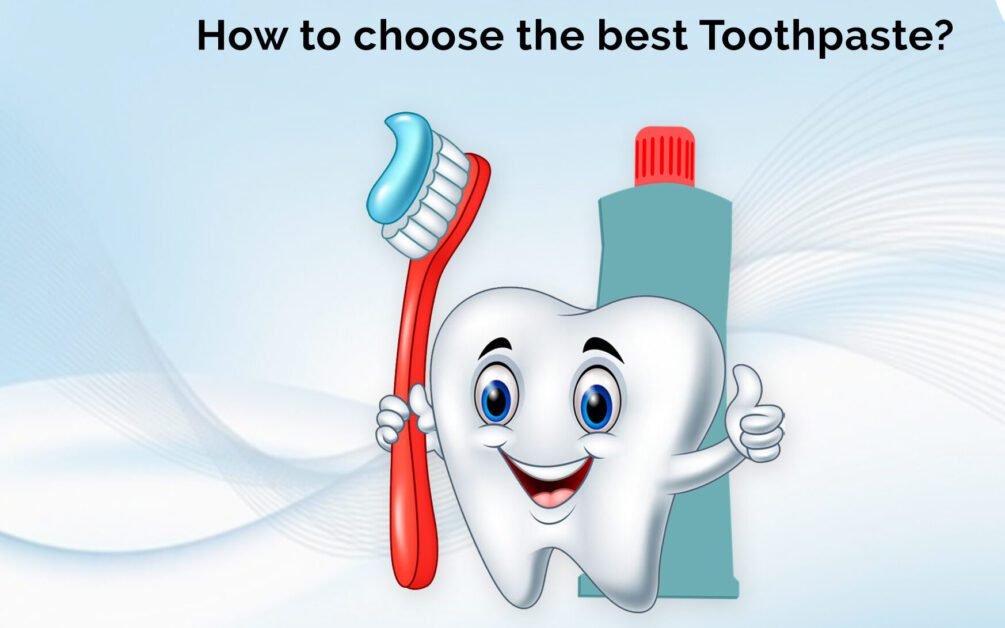
The Best Time to Start Flossing for Kids
Flossing is an essential part of maintaining good oral hygiene for people of all ages, including children. While brushing alone helps remove plaque and food debris from the surfaces of the teeth, flossing reaches the tight spaces between the teeth where a toothbrush can’t quite reach. But when is the best time to start flossing for kids?
According to the American Dental Association (ADA), children should start flossing as soon as they have two teeth that touch each other. This is typically around the age of 2 to 3 years old. By starting early, parents can help their children develop the habit of flossing and ensure that they are effectively removing plaque and maintaining the health of their teeth and gums. It’s important to note that children will need assistance from an adult until they have developed the dexterity to floss on their own, which is usually around the age of 8 to 10 years old.
Tips for Motivating Kids to Maintain Good Oral Hygiene Habits
Good oral hygiene habits are crucial for maintaining healthy teeth and gums, especially in children. However, motivating kids to consistently practice good oral hygiene can sometimes be a challenge. As a parent or caregiver, it is important to find effective strategies that encourage and engage children in the process.
One tip for motivating kids to maintain good oral hygiene habits is to make it a fun and enjoyable experience. Incorporate playful elements into their oral hygiene routine, such as using colorful toothbrushes or flavored toothpaste. Additionally, consider using educational resources, such as books or videos, that teach children about the importance of oral health in a fun and interactive way. By making oral care engaging and enjoyable, children are more likely to develop a positive attitude towards it.
Another effective strategy is to lead by example. Children often mimic the behaviors of adults, so be sure to demonstrate good oral hygiene practices yourself. Brush your teeth alongside your child, showing them the proper technique and emphasizing the importance of thorough cleaning. This not only encourages them to follow suit but also fosters a sense of togetherness and shared responsibility for oral health within the family.
The Link Between Oral Health and Overall Well-being in Children
Maintaining good oral health is not just about having a bright and healthy smile. It plays a crucial role in the overall well-being of children. Research has shown a significant link between oral health and various aspects of a child’s physical and psychological health.
Firstly, poor oral health in children has been associated with an increased risk of developing several systemic conditions. Oral infections, such as tooth decay and gum disease, can lead to inflammation in the body, which is believed to contribute to the development of conditions like diabetes, heart disease, and respiratory problems. In fact, studies have found that children with untreated tooth decay are more likely to miss school days and have impaired concentration and academic performance.
Additionally, good oral hygiene habits from an early age can promote positive self-esteem and mental well-being in children. Toothaches, cavities, and other dental problems can cause pain, discomfort, and embarrassment, leading to anxiety, social withdrawal, and even depression. On the other hand, children with a healthy smile are more likely to feel confident, smile freely, and engage in social activities, fostering positive relationships and overall emotional well-being.
Taking care of children’s oral health goes beyond simple brushing and flossing. It involves regular dental check-ups, a balanced diet, and proper oral hygiene practices. As parents, it is our responsibility to ensure our children’s oral health is prioritized, not only for a beautiful smile but also for their overall well-being. (Word Count: 293)
Common Dental Problems in Children and How to Prevent Them
Tooth decay, also known as dental caries, is one of the most common dental problems affecting children. It occurs when bacteria in the mouth convert sugars and carbohydrates into acid, which then erodes the tooth enamel. Poor oral hygiene, excessive consumption of sugary snacks and drinks, and lack of fluoride are significant risk factors for tooth decay in children.
Preventing tooth decay involves a multifaceted approach. First and foremost, parents should ensure that their children practice good oral hygiene habits, such as brushing their teeth twice a day with fluoride toothpaste and flossing once a day. Regular dental check-ups are also essential for early detection and treatment of any dental issues. Moreover, parents should encourage their children to limit their intake of sugary foods and beverages, as well as promote a well-balanced diet that includes plenty of fruits and vegetables. Lastly, the use of fluoride, either through fluoridated water or fluoride treatments, can provide additional protection against tooth decay.
Another common dental problem in children is malocclusion, or misalignment of the teeth and jaws. Malocclusion can lead to difficulties in chewing, speaking, and maintaining proper oral hygiene. It can also impact the child’s self-esteem and overall well-being. Malocclusion can be caused by a variety of factors, including genetics, thumb sucking, pacifier use, and improper oral habits. Orthodontic treatment, such as braces or aligners, may be necessary to correct severe cases of malocclusion.
In conclusion, dental problems in children can be prevented through proper oral hygiene practices, a balanced diet, and regular dental visits. It is crucial for parents to equip themselves with knowledge about common dental problems and take proactive steps to protect their children’s oral health. By instilling good oral care habits from an early age, parents can set their children up for a lifetime of healthy smiles. So, it is imperative to prioritize oral care for children and take necessary preventive measures to ensure their optimal dental health.
The Benefits of Regular Dental Check-ups for Kids
Regular dental check-ups are a crucial aspect of maintaining optimal oral health for children. These check-ups allow dentists to monitor the growth and development of the child’s teeth, identify any potential issues early on, and provide timely intervention when necessary. By scheduling regular dental visits, parents can ensure that their children’s teeth and gums are healthy and that any dental problems are addressed promptly.
During a routine dental check-up, dentists perform a comprehensive examination of the child’s teeth, gums, and mouth. They check for any signs of tooth decay, gum disease, or other oral health problems. Additionally, dentists may take X-rays to detect any hidden issues such as cavities between teeth or dental abnormalities. This thorough evaluation helps in the early detection and treatment of dental problems, preventing them from worsening and potentially leading to more extensive and costly procedures in the future. Dental check-ups also allow for professional teeth cleaning, which removes plaque and tartar buildup, preventing cavities and gum disease.
How to Handle Children’s Dental Anxiety and Fear
Dental anxiety and fear are common in children and can make dental visits a challenging experience. As a parent or caregiver, it is important to address and handle this anxiety in a sensitive and effective manner. Here are some strategies that can help alleviate children’s dental anxiety and fear:
1. Open communication: Start by having an open and honest conversation with your child about their fears and concerns. Listen attentively to their feelings and validate their emotions. This will help them feel heard and understood, which can alleviate some anxiety.
2. Choose a child-friendly dentist: Look for a dentist who specializes in pediatric dentistry and has experience working with anxious children. A child-friendly dental office with a welcoming environment, colorful decor, and toys can also help create a positive experience for your child.
| Age Group | Common Causes of Anxiety and Fear | Coping Strategies |
|---|---|---|
| Toddlers | Unfamiliarity with dental setting | Parental presence and reassurance |
| Loud noises from dental equipment | Distraction with toys or books | |
| Preschool | Fear of separation from parents | Use of positive reinforcement |
| (3-5 years) | Fear of pain or discomfort | Explanation of procedures beforehand |
| Fear of unknown dental tools | Show-and-tell with dental equipment | |
| School-age | Previous negative experiences | Building trust with dental staff |
| (6-12 years) | Fear of injections or needles | Using age-appropriate language |
| Peer influence | Providing rewards or incentives | |
| Adolescents | Concerns about appearance | Engaging in open communication |
| (13-18 years) | Anxiety about orthodontic work | Offering relaxation techniques |
| Fear of judgment from peers | Encouraging self-expression |
The Role of Fluoride in Children’s Oral Health
Fluoride plays a crucial role in promoting optimal oral health in children. It helps prevent tooth decay by strengthening tooth enamel and making it more resistant to acid attacks from bacteria and sugars. Research has shown that communities with fluoridated water experience significantly fewer cavities in both children and adults.
According to the American Academy of Pediatric Dentistry, children who receive the appropriate amount of fluoride during the developmental stages of their teeth are less likely to develop cavities. In addition to fluoridated water, fluoride can also be found in toothpaste, mouth rinse, and professional treatments applied by dentists.
However, it is important to note that while fluoride is beneficial, proper dosage is crucial. Too much fluoride can lead to dental fluorosis, a condition that causes discoloration and pitting of the tooth enamel. This is why it is essential for parents to monitor their child’s fluoride intake and follow the guidance of their dentist or healthcare professional.
In conclusion, fluoride is an essential element in children’s oral health. It helps strengthen tooth enamel and prevent cavities, but it should be used in appropriate amounts to avoid dental fluorosis. Working with dental professionals and following their recommendations will ensure that children receive the right amount of fluoride to support their oral health and overall well-being.
Teaching Kids the Importance of Limiting Sugary Snacks and Drinks
Sugar is a major culprit when it comes to dental decay in children. Teaching kids the importance of limiting sugary snacks and drinks is crucial for maintaining their oral health. Excessive consumption of sugary treats can lead to the formation of acid-producing bacteria in the mouth, which then attack the tooth enamel, resulting in cavities.
One effective approach to teaching kids about the importance of limiting sugary snacks and drinks is through education and setting a good example. By explaining to children the harmful effects of eating too much sugar on their teeth, you can help them understand the importance of making healthier choices. Encourage them to choose snacks that are low in sugar, such as fruits, vegetables, and whole grains, instead of cookies, candies, and sugary beverages. It is also important to limit their intake of sugary drinks like soda, sports drinks, and fruit juices, as these can be especially harmful to teeth due to their high sugar content. By instilling these habits early on, you can help children develop a lifelong commitment to maintaining a healthy smile.
| Why Limit Sugary Snacks and Drinks? | Healthy Alternatives |
|---|---|
| Sugary snacks and drinks can lead to cavities and tooth decay. | Fresh fruits like apples, oranges, or berries. Vegetables like carrots, celery sticks, or cucumber slices. |
| Too much sugar can cause weight gain and obesity. | Nuts such as almonds or cashews. Yogurt with no added sugar. |
| Excessive sugar intake may lead to diabetes and other health problems. | Whole grain crackers with cheese. Hummus with whole grain pita bread or veggie sticks. |
| Sugary snacks and drinks can cause energy crashes and mood swings. | Air-popped popcorn seasoned with herbs or spices. Homemade trail mix with nuts, seeds, and dried fruit. |
| Consuming too much sugar can affect concentration and learning abilities. | Water infused with fruits like lemon, lime, or cucumber. Herbal teas without added sugar. |
The Impact of Thumb Sucking and Pacifier Use on Dental Development
Thumb sucking and pacifier use are common habits among young children, but they can have a significant impact on dental development. These habits can cause various dental issues, including misalignment of the teeth and improper growth of the jaw. In fact, studies have shown that prolonged and vigorous thumb sucking or pacifier use can lead to malocclusions, such as an open bite or an overbite.
When a child sucks their thumb or uses a pacifier, it exerts pressure on their developing teeth and jaw. This pressure can lead to the misalignment of teeth, as the constant sucking motion can push the teeth forward or sideways. Additionally, the pressure can affect the growth of the jaw, causing it to become misshapen or narrow. As a result, the child may develop an improper bite, which can have long-term consequences for their oral health.
Parents should be aware of the potential effects of thumb sucking and pacifier use on their child’s dental development. Encouraging the child to stop these habits at an early age can help prevent dental problems in the future. However, it’s important to approach this issue with patience and understanding, as these habits often serve as a source of comfort for young children. Consulting with a pediatric dentist can provide guidance on the best strategies to help your child break these habits and ensure proper dental development.
Understanding the Effects of Mouth Breathing on Children’s Oral Health
Mouth breathing is a common habit among children that can have detrimental effects on their oral health. When a child breathes through their mouth instead of their nose, it can lead to a range of issues related to dental development and overall oral health.
One of the key effects of mouth breathing is the alteration in the positioning of the teeth. The constant flow of air passing over the teeth can cause them to become misaligned or crooked. This can result in issues such as a malocclusion, where the upper and lower teeth do not fit together properly when biting or chewing. Such misalignment can also lead to problems with speech and proper jaw growth.
Additionally, mouth breathing can cause the mouth to become dry, as the natural lubrication provided by saliva is reduced. This dryness creates an ideal environment for harmful bacteria to thrive, increasing the risk of tooth decay and gum disease. The lack of adequate saliva flow also limits the mouth’s natural ability to neutralize acids produced by bacteria, leading to an increased risk of cavities.
It is essential for parents and caregivers to be aware of the effects of mouth breathing and take appropriate measures to address the issue. This may involve consulting with a dentist or orthodontist who can provide guidance on how to encourage nose breathing and correct any dental problems that may have already arisen. Ongoing monitoring and intervention can help ensure the long-term oral health of children who are prone to mouth breathing.
Advice for Parents on Creating a Positive and Healthy Dental Routine for Kids
Creating a positive and healthy dental routine for kids is essential for their overall oral health and well-being. As a parent, it is important to establish good habits from an early age to ensure that children develop strong and healthy teeth. Firstly, make brushing a fun and enjoyable experience for your child. Use child-friendly toothbrushes with soft bristles and a small head that can easily reach all areas of their mouth. Additionally, choose toothpaste that is specifically designed for kids, with a fluoride content suitable for their age.
It is also important to teach kids the correct technique for brushing their teeth. Show them how to brush in gentle circular motions, ensuring that they cover all surfaces of their teeth, including the back and gums. Remember to encourage them to brush for at least two minutes, twice a day. You may also consider using a timer or playing a favorite song to make the process more enjoyable and ensure they brush for the recommended duration. By making brushing a regular part of their routine, you are instilling good habits that will benefit their dental health in the long run.
When should I start taking my child to the dentist?
It is recommended to take your child to the dentist for their first check-up by their first birthday or within six months after their first tooth erupts.
How often should my child visit the dentist?
Regular dental check-ups are important for children. It is generally recommended to visit the dentist every six months, but your dentist may suggest more frequent visits depending on your child’s individual needs.
Can my child use the same toothpaste as adults?
Children should use toothpaste that is specifically formulated for their age group. It is important to choose a toothpaste that contains the appropriate amount of fluoride for their age.
Should my child use a manual or electric toothbrush?
Both manual and electric toothbrushes can be effective in cleaning your child’s teeth. The most important factor is to choose a toothbrush with soft bristles that is comfortable for your child to use.
How can I help my child overcome dental anxiety?
Dental anxiety is common in children. You can help by preparing them for their dental visit, choosing a child-friendly dentist, and using positive reinforcement and distraction techniques during the appointment.
Is thumb sucking and pacifier use harmful to my child’s dental development?
Prolonged thumb sucking or pacifier use can affect the alignment of your child’s teeth and the development of their jaw. It is best to encourage your child to stop these habits by the age of 3 to minimize potential dental problems.
How does mouth breathing affect my child’s oral health?
Mouth breathing can lead to dry mouth, which increases the risk of tooth decay and gum disease. It can also affect the development of the face and jaw. If you suspect your child is mouth breathing, consult with a dentist or pediatrician.
Can my child have sugary snacks and drinks occasionally?
It is important to limit your child’s consumption of sugary snacks and drinks as they can contribute to tooth decay. Occasional treats are fine, but it is best to encourage a balanced diet and good oral hygiene habits.
How can I teach my child about the importance of good oral hygiene?
You can teach your child about the importance of good oral hygiene by leading by example, making brushing and flossing fun, using educational resources like books or videos, and praising their efforts when they maintain good oral hygiene habits.
What should I do if my child has a dental emergency?
In case of a dental emergency, such as a knocked-out tooth or severe toothache, contact your dentist immediately. They will provide guidance on how to handle the situation and may need to see your child as soon as possible.



